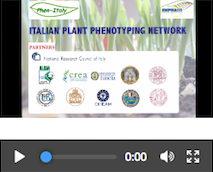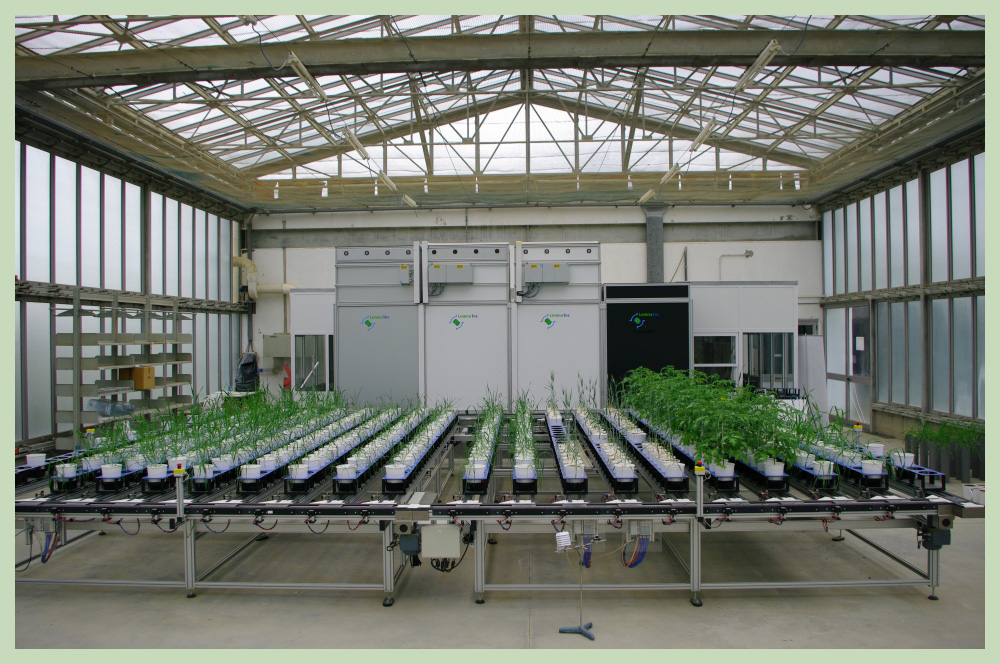Focus on Plant Phenotyping Forum: integrating European plant phenotyping community, 22th – 24th November 2017 Tartu (Estonia)
by Federico Brilli, Institute for Sustainable Plant Protection (IPSP) - National Research Council of Italy (CNR)
On 22th – 24th of November, 2017, (Estonia) the Plant Phenotyping Forum: integrating European plant phenotyping, was held in Tartu (Estonia) supported by the European Plant Phenotyping Network (EPPN 2020, https://eppn2020.plant-phenotyping.eu/), the ESFRI (http://www.esfri.eu/), EMPHASIS (https://emphasis.plant-phenotyping.eu/ projects), and the Centre of Excellence ECOLCHANGE (http://ecolchange.emu.ee/en/). This event was attended by a broad and international community of researchers, students and representatives of the national phenotyping platforms belonging to many European countries (such as Estonia, Poland, Germany, Belgium, Ireland, France, Italy) and run by both transnational private companies and consortia of public plant research institutes.
Andreas Koppler, Director General of the Estonian Research Council, introduced the meeting underlining the active support of the Estonia Centre of Excellence in Research (EcolChange) in the realization of a European network of instrumented phenotyping.
As Uli Schurr (Institute of Bio- and Geosciences, Forschungszentrum in Jülich, Germany and EMPHASIS coordinator) thoroughly described in his speech, the meeting aimed at further integrating and expanding the existing plant phenotyping community through the preparation of a joint project proposal that would enhance the implementation of a pan ‘European Infrastructure for Multi-Scale Plant Phenotyping and Simulation for Food Security in a Changing Climate’ (EMPHASIS-PREP). The mission of the EMPHASIS is to realize persistent installations of multi-scale plant phenotyping for a twofold purpose: quantify the diversity of plants traits at multiple levels (from specific plant parts to the whole plant community) to monitor plant performance in the field on the one hand; on the other, analyse genotypes and increase breeding efficiency for achieving both higher crop yields and resistance to environmental stress (i.e. drought). This would be possible only by creating synergies between the existing phenotyping platforms at National and European level, and by following an interdisciplinary approach that put together the construction of intensive field sites with the development of new technologies for deep- or high-throughput plant phenotyping (i.e. NMR, tomography and imaging techniques), along with the implementation of non-invasive remote sensing methods, modelling and data integration.
François Tardieu (Institut National de la Recherche Agronomique, INRA, France) coordinator of the EPPN2020, briefed on the activities of this project, which started recently (May, 2017). EPPN2020 aims to shape a European community of phonemics, by providing transnational access to 31 plant phenotyping installation across 15 European countries and thus setting the basis for permanent infrastructures. Through the application of novel techniques and methods for environmental and plant measurements, including model-assisted phonemics, EPPN2020 will contributed in the next years to build a consistent information system in addition to define standardized strategies and statistical methods for the analysis and quality control of the ‘big’ data collected.
During the course of the meeting, oral presentations displayed the modern advances in the automatization of real-time environmental data collection (as well as data management) and in the development of methods for high-throughput plant phenotyping under field conditions. Among the speakers, Tony Pridmore (the University of Nottingham, UK), illustrated how the ‘deep learning’ represents today a revolution in image-based plant phenotyping; indeed, softwares can now be trained to recognize patterns of data and evaluate images of vegetation collected from different categories of cameras (i.e. RGB/CIR, multi- or hyper-spectral, NDVI, thermal) in order to assess specific plants characteristics (i.e. photosynthesis, radiation use efficiency), and predict complex plant traits (i.e. grain yield). Xavier Draye (The Université Catholique de Louvain, Belgium) presented a 4D model to describe root architecture and, in particular, to track assimilate allocation in time and space among the root types; by coupling soil and root hydraulics, this mathematical model is able to spot where water is really uptake in the root system and makes prediction of the elongation rates of different roots. Jöer-Peter Schnitzler (Helmholtz Zentrum München, Germany) highlighted the possibility to perform high-throughput measurement of the entire blend of volatile organic compoudns (VOC) emitted from plants (the ’plant volatome’) for providing a real-time diagnosis of crop health status and of early stress occurrence. Francesco Cellini (Agenzia Lucana di Sviluppo e di Innovazione in Agricoltura, ALSIA, Italy) showed novel results from the application of an high throughput phenotyping platform based on a Scanalyzer 3D system equipped with RGB, UV, and NIR camera, and revelaed preliminary details on the development of novel ‘in planta’ sensors to study plant response to abiotic stress, particularly to drought and conditions of high salt concentration in the soil.
Many more novel laboratory- and field-based experimental techniques for plant phenotyping were shown in a poster session, demonstrating an ongoing lively and highly productive scientific community. Following Brussel, Lisbon, Vienna and Gothenburg, this has been just one of the other appointments of the EMPHASIS-PREP roadmap towards the future development of partnerships and research infrastructures for a large-scale and long-term integrated plant phenotyping network.




